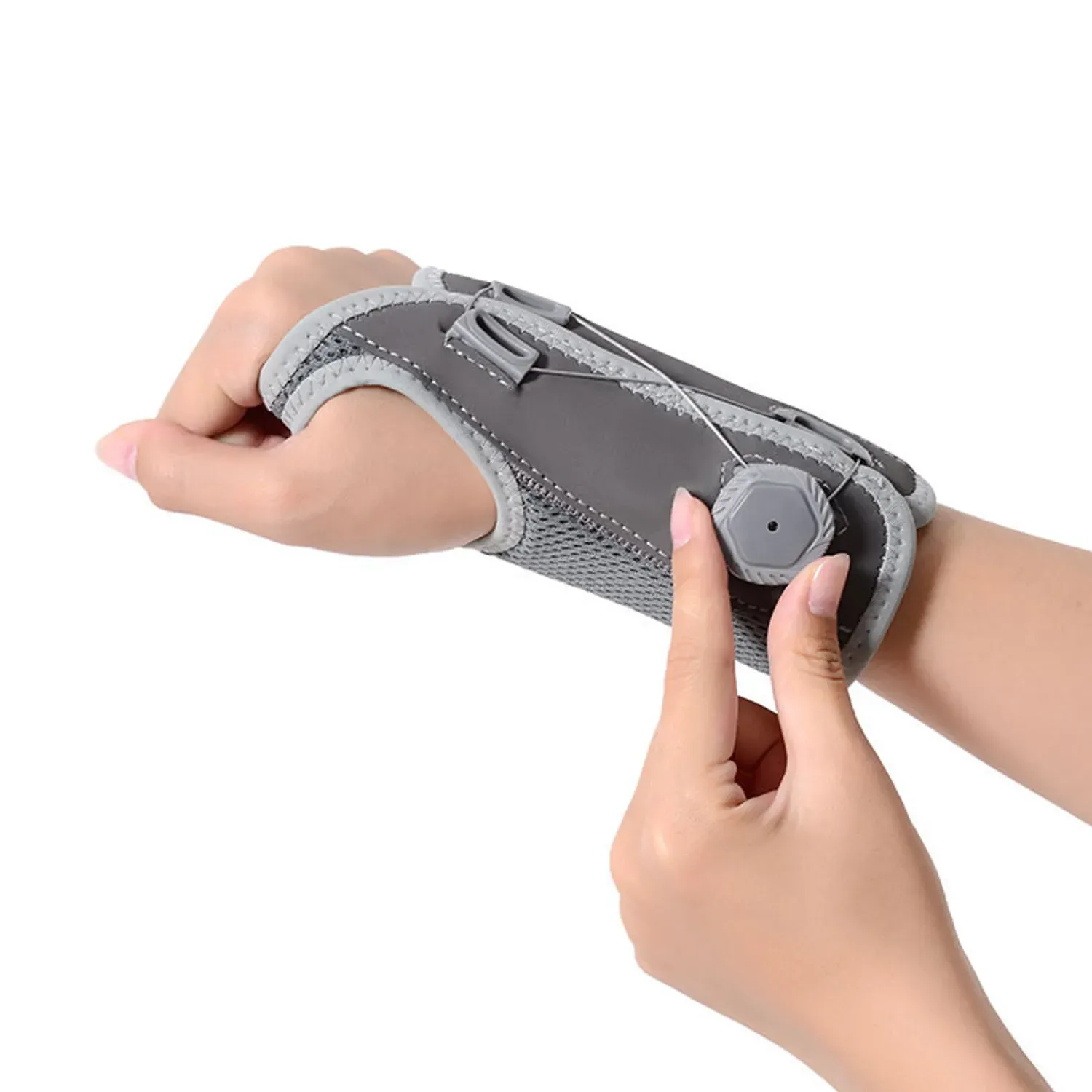john@lee-mat.com
+86-13510662576

GET QUOTE
What is the Difference Between a Wrist Splint and a Wrist Brace?
When it comes to wrist injuries, the terms "wrist splint" and "wrist brace" are often used interchangeably. However, they serve different purposes and are used in different contexts. Understanding the difference between a wrist splint and a wrist brace can help you choose the right support for your specific needs.
Understanding Wrist Injuries
Wrist injuries are common, especially among athletes, typists, and anyone who performs repetitive hand movements. These injuries can range from mild sprains to severe fractures. Two of the most common supports used to manage these injuries are wrist splints and wrist braces. While both provide support and stabilization, they do so in different ways and are used for different types of injuries.
What is a Wrist Splint?
A wrist splint is a medical device used to immobilize the wrist joint. It is typically used in cases of severe wrist injuries such as fractures, severe sprains, or post-surgical recovery. A wrist splint is designed to hold the wrist in a specific position, preventing movement and allowing the injured area to heal properly.
Features of a Wrist Splint
- Rigid Structure: A wrist splint usually has a rigid structure made of metal or hard plastic. This rigidity ensures that the wrist remains immobile.
- Adjustable Straps: Most wrist splints come with adjustable straps to provide a snug fit and prevent the splint from slipping.
- Padding: For comfort, wrist splints often have padding on the inside. This padding reduces pressure on the skin and increases comfort during prolonged use.
- Specific Positioning: Wrist splints are designed to hold the wrist in a specific position, usually slightly extended, to promote optimal healing.
When to Use a Wrist Splint
Wrist splints are typically used in the following scenarios:
- Fractures: To keep the broken bones in place while they heal.
- Post-Surgery: To protect the surgical site and ensure proper healing.
- Severe Sprains: When ligaments are severely damaged and need complete immobilization to heal.
What is a Wrist Brace?
A wrist brace, on the other hand, is a support device that provides stability and compression to the wrist joint without completely immobilizing it. Wrist braces are often used for less severe injuries or conditions that require support but still allow for some movement.
Features of a Wrist Brace
- Flexible Support: Wrist braces are typically made of neoprene, elastic, or similar flexible materials. This flexibility allows for some degree of movement while still providing support.
- Compression: Wrist braces provide compression to the injured area, which can help reduce swelling and pain.
- Adjustable Fit: Like splints, wrist braces also come with adjustable straps to ensure a secure fit.
- Breathable Materials: Many wrist braces are made from breathable materials to keep the skin dry and comfortable.
When to Use a Wrist Brace
Wrist braces are suitable for:
- Mild to Moderate Sprains: To provide support and reduce strain on the injured ligaments.
- Tendonitis: To limit movement and reduce inflammation of the tendons.
- Carpal Tunnel Syndrome: To alleviate pressure on the median nerve.
- Arthritis: To provide support and reduce pain in the wrist joint.
Key Differences Between a Wrist Splint and a Wrist Brace
Level of Immobilization
The most significant difference between a wrist splint and a wrist brace is the level of immobilization they provide. A wrist splint completely immobilizes the wrist, ensuring that it stays in a fixed position. This is crucial for severe injuries where movement could impede healing. In contrast, a wrist brace allows for some movement while still providing support and compression.
Material and Design
Wrist splints are typically made of rigid materials like metal or hard plastic, whereas wrist braces are made of more flexible materials like neoprene or elastic. The rigid structure of a wrist splint is essential for immobilization, while the flexibility of a wrist brace is ideal for providing support without completely restricting movement.
Usage Scenarios
Wrist splints are generally used in more severe cases such as fractures, post-surgical recovery, and severe sprains. Wrist braces are used for less severe conditions like mild to moderate sprains, tendonitis, carpal tunnel syndrome, and arthritis.
Comfort and Convenience
Because wrist braces are made of flexible, breathable materials, they are generally more comfortable for long-term wear compared to wrist splints. Wrist splints, with their rigid structure, can be more cumbersome and may not be as comfortable for prolonged use.
Choosing the Right Support
Choosing between a wrist splint and a wrist brace depends on the specific nature of your injury and the level of support you need. Here are some tips to help you make the right choice:
Consult a Medical Professional
Always consult a healthcare provider to get a proper diagnosis of your wrist injury. They can recommend whether you need a wrist splint or a wrist brace based on the severity of your condition.
Consider the Level of Support
If you need complete immobilization, a wrist splint is the right choice. If you need support but still want to retain some movement, a wrist brace is more suitable.
Think About Comfort
For long-term wear, comfort is crucial. Wrist braces made from breathable, flexible materials are generally more comfortable for extended use.
Look for Adjustable Features
Both wrist splints and wrist braces should have adjustable straps to ensure a proper fit. This is important to prevent slipping and to provide adequate support.
Evaluate the Material
Consider the material of the support device. Rigid materials are necessary for immobilization, while flexible, breathable materials are better for comfort and moderate support.
Conclusion
When choosing between a wrist splint and a wrist brace, consider the severity of your injury, the level of support you need, and the comfort of the device. Always consult a healthcare professional for an accurate diagnosis and recommendation. By making an informed choice, you can ensure that your wrist receives the appropriate support, promoting faster and more effective healing. Whether you need a wrist splint or a wrist brace, selecting the right one is a crucial step in your recovery journey.
For those looking for a reliable and high-quality wrist brace, consider Lee-Mat's range of wrist supports. Lee-Mat offers expertly designed wrist braces that provide optimal support and comfort, helping you recover swiftly from your wrist injury. With adjustable features, breathable materials, and a commitment to quality, Lee-Mat wrist braces are an excellent choice for anyone seeking effective wrist support. Visit Lee-Mat today to find the perfect wrist brace for your needs and take the first step towards a pain-free, active lifestyle.


